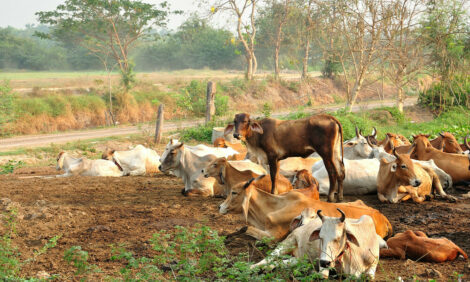



Livestock Production Threatened by HIV/AIDS
GLOBE – Not only is AIDS taking a dramatic toll on human lives but livestock production, a main income earner for rural households, is also being threatened in the most affected countries, FAO warned today.| The loss of animals, prime sources of meat and milk and a main financial asset, can create a spiralling cycle of poverty and insecurity |
With more than 60 percent of all people aged between 15 and 49 years living with HIV to be found in sub-Saharan Africa of whom 11.4 million are children orphaned by AIDS, the effect on the all important livestock sector has become a real concern.
Livestock make a substantial contribution to the incomes and nutrition of some 70 percent of rural households in developing countries, and in East and Southern Africa, for example, contribute as much as 13 percent to GNP, but proportionately much more to the food security of individual households.
Livestock provide income and food in the form of meat, milk and eggs; they also serve other important roles on the farm including draught power, and manure for fertilizer and as a source of fuel. However, with more and more of the working age population affected by HIV/AIDs fewer people are available to tend livestock.
Selling animals to pay bills
Household surveys in sub-Saharan Africa indicate that once family savings are exhausted, animals are usually the main asset sold to cover medical expenses or to meet funeral costs. The slaughter or sale of animals reduces herd size, resulting in less livestock products such as milk, eggs, meat, and hides being available for food or sale. Smaller herds can reduce the available breeding stock with a resulting negative impact on animal genetic resources within a community or area.
“In Zambia, an FAO study showed that in the past it was rare for HIV-affected households to sell a heifer or milking cow, where now it is commonplace. The short and long-term effects of this on family incomes and food security can be devastating”, said Simon Mack, Senior Officer in the Livestock Production Group.
At the same time, “in areas of high HIV incidence, veterinary services also no longer function properly because of the impact to the disease on staffing and skills levels”, said Simon Mack.
Women and children worst hit
Men are usually responsible for land cultivation using draught animals and in overall farm management in sub-Saharan Africa. Where men have become sick or have died due to AIDS, women and children may lack the skills, experience, time or resources to perform the same roles. Children may also be withdrawn from schools to help in the farm and household. The loss or transfer of cattle and other livestock following the death of an adult male, due to property inheritance or cultural traditions, can result in women and children losing these resources completely.
What is certain is that more research is needed on how the AIDS pandemic is impacting on livestock production and its consequences for affected communities, in order to develop strategies to minimize the negative consequences on both vulnerable households and populations and on the livestock sector itself.
Livestock as part of the solution
Livestock can however play a key role in lessening the impact of HIV/AIDS in affected communities. Poultry, sheep and goats can provide affected households with renewable assets, income and the possibility to improve the household diet. These species are easily managed, affordable, prolific and have short reproduction cycles. Moreover, most women in rural areas are experienced in keeping them. Small stock are also more appropriate for elderly and orphan-headed households. Simple, low-cost projects can increase the productivity of small ruminants through improved housing, feeding and animal health care. What is still required is for the development community to fully appreciate the contribution that livestock can make.
TheCattleSite News Desk


